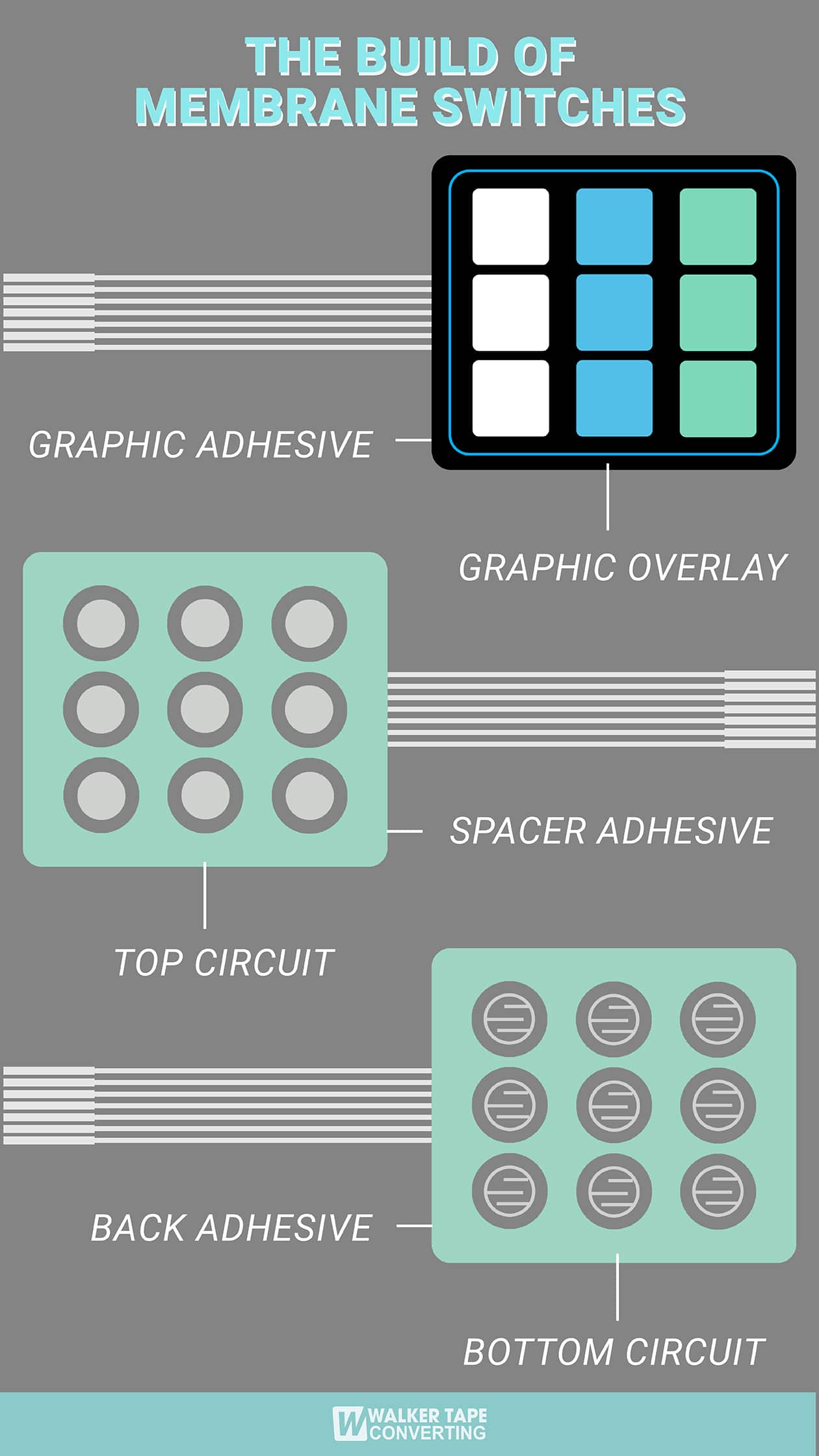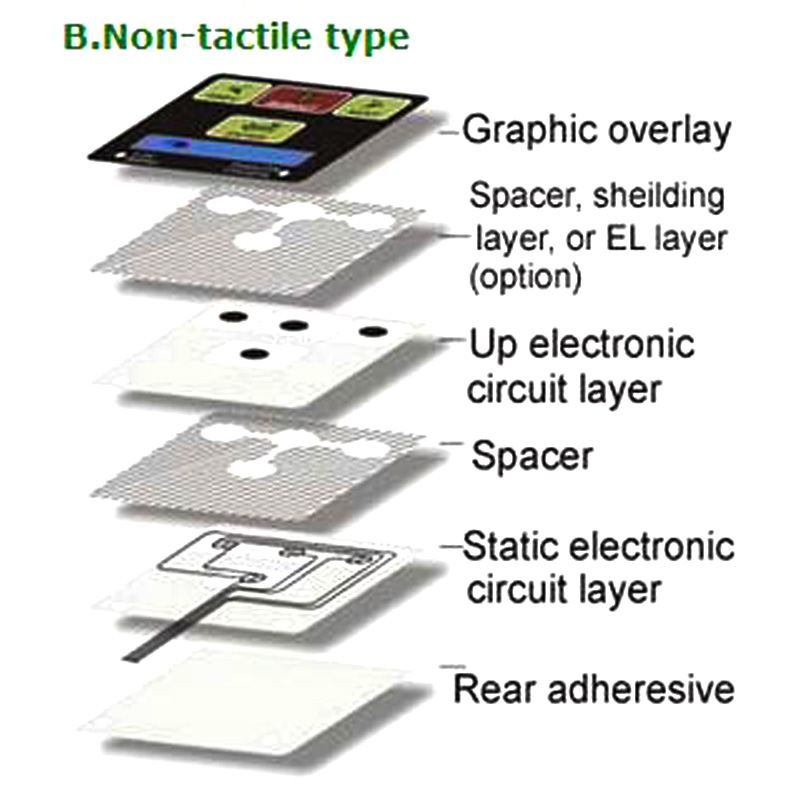Comprehending the Relevance of Membrane Switch in Modern Electronic Devices
Membrane switches are important components in contemporary digital tools. They provide a blend of capability and layout that enhances user interaction. Their sturdy and light-weight nature makes them suitable for different applications. As industries evolve, the demand for customization and advanced features expands. Recognizing just how membrane layer switches add to advancement reveals their value in forming the future of electronic devices. What lies in advance for this technology?
The Basics of Membrane Layer Switch Innovation
Although typically forgotten, membrane layer button innovation plays a crucial role in the contemporary electronics landscape - membrane switch. These devices, made up of multiple layers, work as individual interfaces for various digital items, varying from home home appliances to medical equipment. A regular membrane switch includes a visuals overlay, a spacer layer, and a circuit layer, which are meticulously constructed to produce a functional interface.When stress is used to the overlay, the circuit layer is finished, enabling signals to be sent to the tool. This modern technology is understood for its flexibility, making it possible for customization in shape, layout, and performance to fulfill specific individual needs. Additionally, membrane layer buttons are thin and lightweight, making them ideal for applications where area is a costs. Their durability and resistance to ecological elements better boost their allure, ensuring they can hold up against rough conditions while preserving functionality. Overall, membrane layer button technology is important to creating reliable and user-friendly electronic gadgets

Trick Advantages of Membrane Changes
Membrane layer switches deal several crucial benefits that make them a recommended option in numerous electronic applications. Their layout permits a small kind element, allowing makers to create smooth and lightweight tools. Furthermore, membrane buttons are resistant to dust, wetness, and chemicals, which enhances their resilience and longevity popular environments. The tactile responses provided by these buttons can boost individual experience, making them easy and user-friendly to operate.Furthermore, membrane layer switches can be customized with diverse graphics and shades, permitting for one-of-a-kind branding possibilities. The production procedure is generally cost-efficient, especially for high-volume manufacturing, as it minimizes assembly time and simplifies style. Membrane layer switches require very little maintenance, contributing to lower general operational expenses. These advantages underscore their expanding popularity in modern-day electronics, where dependability and user-friendly interfaces are crucial.

Applications Throughout Various Industries
The convenience of membrane layer switches allows their extensive adoption across numerous sectors. In the medical field, they are typically made use of in diagnostic devices and client surveillance systems, using a resilient interface immune to contaminants. The automotive market uses membrane switches for control panel controls, improving individual experience with smooth designs that withstand rough problems. In consumer electronic devices, they function as control panels for tools such as microwaves and coffee machine, providing an user-friendly user interface that is easy to tidy. The aerospace sector employs membrane buttons in cabin controls, where dependability and area effectiveness are extremely important. In addition, the industrial market leverages these buttons in equipment and control systems to guarantee robust operation sought after settings. This broad range of applications emphasizes the adaptability of membrane layer buttons, making them essential parts in boosting performance and user interaction throughout diverse technological landscapes.
Personalization and Layout Flexibility

Future Trends in Membrane Switch Growth
Arising fads in membrane layer button growth indicate a growing focus on boosted performance and integration with clever technologies. As customer demand for extra sophisticated electronic devices boosts, suppliers are concentrating on developing membrane layer switches over that not just serve standard functional functions yet also include attributes like touch sensitivity, backlighting, and haptic check out here feedback.Furthermore, improvements in materials are expected to boost longevity and environmental resistance, making membrane switches ideal for diverse applications in markets such as healthcare, auto, and customer electronic devices. The assimilation of capacitive touch innovation is likely to end up being much more prevalent, enabling sleeker styles and boosted user interfaces. membrane switch.Additionally, the surge of the Web of Things (IoT) is motivating the growth of membrane layer switches that can connect wirelessly with other devices, improving interconnectivity. In general, the future of membrane layer button technology shows up appealing, driven by innovation and the pursuit of straightforward options
Frequently Asked Inquiries
How Do Membrane Layer Changes Contrast to Conventional Mechanical Buttons?
Membrane layer switches, being extra space-efficient and using a sleek style, contrast with typical mechanical switches that offer responsive feedback. The previous commonly include adjustable graphics, while the last usually guarantee sturdiness and integrity in various applications.
What Products Are Commonly Utilized in Membrane Layer Switch Over Production?
Membrane layer buttons are generally created making use of materials such as polyester, polycarbonate, and published conductive inks. These products offer versatility, responsiveness, and longevity, making them suitable for various applications in electronic devices and customer interfaces.
Can Membrane Switches Be Repaired or Recycled?
Membrane switches can typically be repaired, particularly if small problems occur, such as adhesive failing or surface damage. However, full reuse is commonly restricted as a result of put on and possible deterioration of materials in time.
Just How Do Environmental Factors Influence Membrane Switch Over Performance?
Environmental variables, such as exposure, moisture, and temperature to chemicals, greatly influence membrane layer switch performance. Severe conditions can bring about degradation, influencing responsiveness and longevity, inevitably compromising the capability of the device in different applications.
What Is the Normal Lifespan of a Membrane Layer Switch?
The normal life expectancy of a membrane switch usually ranges from 1 to 5 million actuations, depending upon aspects such as usage frequency, ecological problems, and the products used in production, influencing sturdiness and efficiency long see this site life. A common membrane layer button is composed of a visuals overlay, a spacer layer, and a circuit layer, which are carefully set up to develop a functional interface - membrane switch.When pressure is applied to the overlay, the circuit layer is completed, enabling signals to be sent to the tool. The responsive responses offered by these switches can improve customer experience, making them very easy and intuitive to operate.Furthermore, membrane buttons can be tailored with varied graphics and shades, allowing for unique branding opportunities. As customer need for much more sophisticated electronic devices rises, manufacturers are concentrating on producing membrane switches that not just offer basic operational functions however additionally integrate attributes like touch level of sensitivity, backlighting, and haptic feedback.Furthermore, innovations in materials are expected to boost sturdiness and ecological resistance, making membrane switches over appropriate for varied applications in markets such as medical care, auto, and consumer electronics. The combination of capacitive touch innovation is most likely to become a lot more prevalent, permitting for sleeker styles and improved user interfaces.Additionally, the rise of the Internet of Points (IoT) is prompting the advancement of membrane switches that can interact wirelessly with other gadgets, enhancing interconnectivity. Membrane layer switches, being much more space-efficient and providing a streamlined style, contrast with conventional mechanical buttons that provide responsive responses